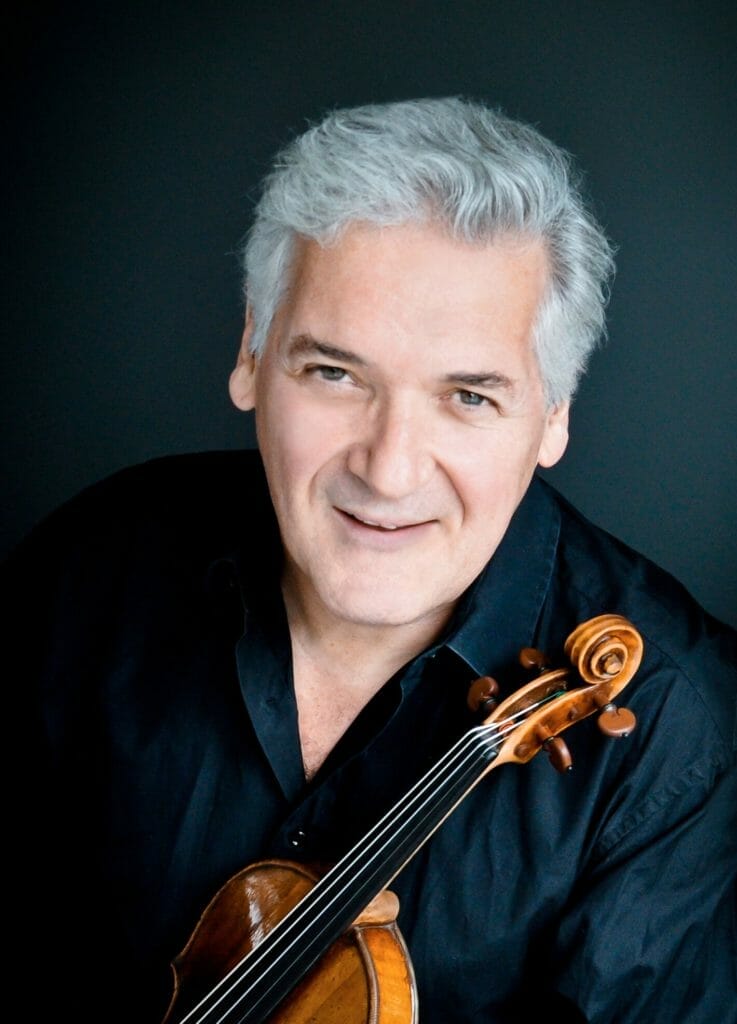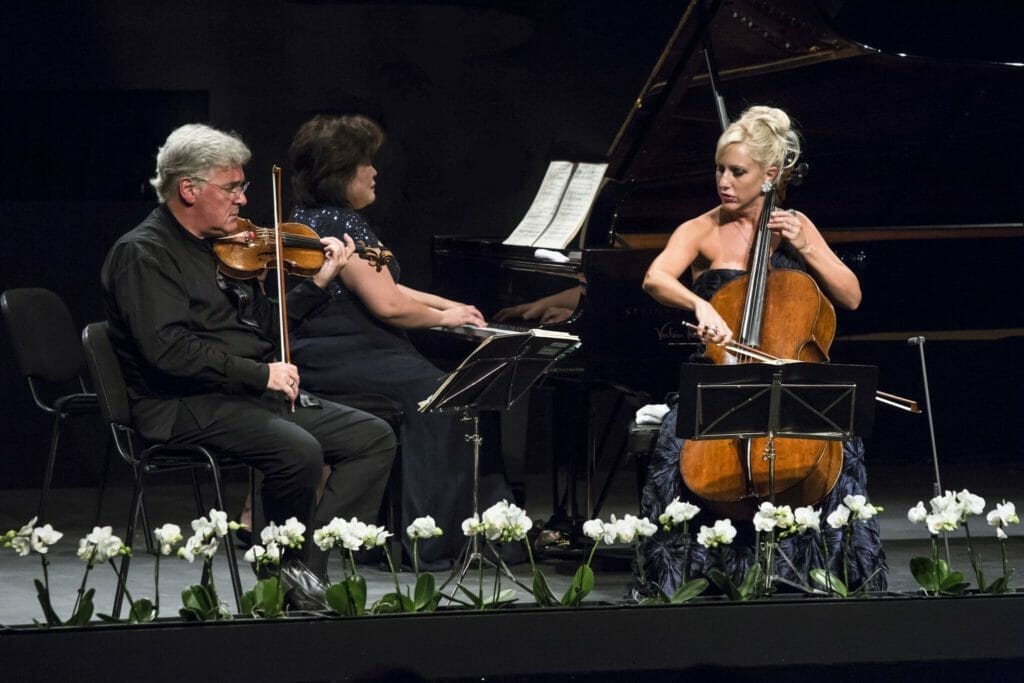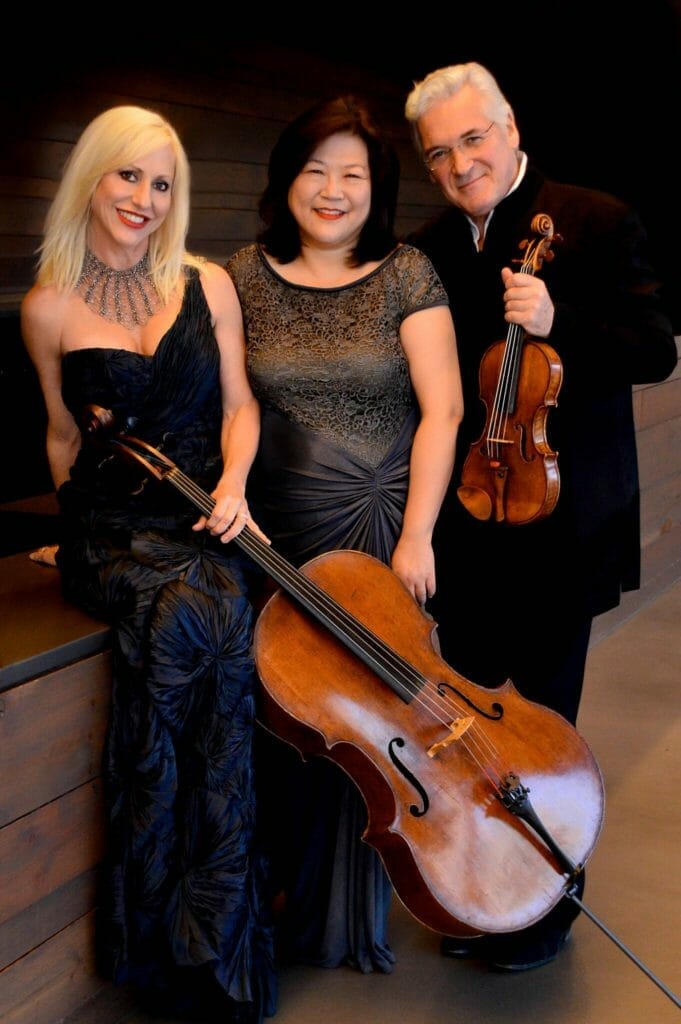It takes both technical mastery and a deep emotional investment to make Shostakovich’s notoriously atonal music as affecting as the Zukerman Trio does. The chamber musicians performed three pieces during a concert at Evanston’s Nichols Concert Hall presented by the Music Institute of Chicago on May 20. Bookending Dmitry Shostakovich’s 1944 Piano Trio No. 2 in E minor were two nineteenth century romantic works. Truly, they were lovely, but it was clear from watching how Pinchas Zukerman (violin), Amanda Forsyth (cello), and Angela Cheng (piano) physically transformed during the half-hour long centerpiece that their hearts were with Shostakovich that day.
Musicians’ Bodies and Instruments in Tune with Each Other
The concert opened with Ludwig van Beethoven’s Allegretto for Piano Trio WoO.39. A short, cheerful piece, it provided the trio with a chance to warm up to each other before the challenging work ahead. Forsyth swayed and Cheng bobbed her head as their instruments, as times, became nearly indistinguishable. Zukerman, as maestro, was intensely focused as the single-movement allegretto flowed between the trio, becoming more excited in its variations.
A Small Taste of the War’s Stress
Shostakovich’s trio starts with a screeching cello wail before turning into something more conventionally gloomy when the minor key violin and piano join in. The piece was written after the worst fighting of World War II and the death of one of Shostakovich’s close friends. Over the course of its four movements, it’s jarring notes are anxious, antic and exhausted, yet driven to continue. There’s a section of the second part, an allegro ma non troppo, played by Zukerman that sounds like someone trying to catch their breath. Besides pushing the boundaries of how much emotion he could put into notation, Shostakovich also pushed the instruments to make sounds they normally do not. Zukerman and Forsyth’s technical abilities were visibly evident here, as they strummed and played pizzicato at the extremes of their instruments ranges.
Zukerman threw his body into the largo that makes up the third movement and its folk-inspired melody. Undoubtedly, a great deal of the music’s emotional power comes from seeing the physicality of the people producing it. The trio tensed and released much like the strings of their instruments as they passed energy among them during the Shostakovich section.
Zukerman Trio Cools Down with a Folk Song
The final piece of music, Antonin Dvořák’s “Dumky” (Piano Trio in E-flat Major) is as long as the middle, but in this context, it felt like a return to normalcy. Written to show off Czech folk stylings to the world, it contains the graceful melodies more typical of somber mediation. Though a pretty-cry in contrast to Shostakovich’s ugly-cry, it’s not all gloomy. During the faster moments, it’s easy to imagine people dancing to it. Still, the trio’s adagios and andantes spun out into a delicate, arcing shape as the piece returned to its dramatic mood. At this performance, it even matched the weather. As storms do, it ended with a feeling of tranquility, no doubt bolstered by the audience’s affection for these performers in an intimate concert hall. The chamber concert format matches the Music Institute of Chicago’s formation of a close-knit community and it was evident how inspirational this sort of performance is for students seeking their own meaning in classical compositions.
Learn more about upcoming programs at the Music Institute of Chicago.
About the Author: Jacob Davis

Jacob Davis has lived in Chicago since 2014 when he started writing articles about theatre, opera, and dance for a number of review websites. He is a graduate of the University of Illinois at Urbana-Champaign’s Department of Theatre, where he specialized in the history of modernist dramatic literature and criticism. While there, he interned as a dramaturge for Dance Heginbotham developing concepts for new dance pieces. His professional work includes developing the original jazz performance piece The Blues Ain’t a Color with Denise LaGrassa, which played at Theater Wit. He has also written promotional materials for theatre companies including Silk Road Rising.
Click here to find more Picture This Post articles by Jacob Davis.





